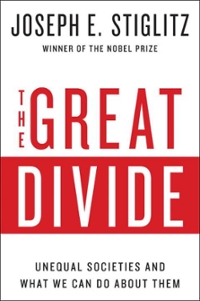Question
1. Adam Smith argued that the result of everyone pursuing their own interests will be: a. The maximization of the interests of no one b.
1. Adam Smith argued that the result of everyone pursuing their own interests will be:
a. The maximization of the interests of no one
b. The maximization of the interests of society
c. The end of capitalism
d. A market failure.
e. None of the above
2. The benefit surplus received by a consumer or consumers in a market is called:
a. Positive Externality
b. Negative Externality
c. Consumer Surplus
d. Producer Surplus
e. None of the above
3. The benefit surplus received by a producer or producers in a market is called:
a. Positive Externality
b. Negative Externality
c. Consumer Surplus
d. Producer Surplus
e. None of the above
4. A producer's minimum acceptable price is equal to their:
a. Marginal Cost
b. Marginal Benefit
c. Average Cost
d. Total Cost
e. None of the above
5. The reduction of total surplus resulting from an underproduction or overproduction of a good:
a. Public Good
b. Public Bad
c. Negative Externality
d. Deadweight Loss
e. None of the above
6. When everyone pursues their own interests does not lead to the maximization of the interests
of society, you have a(n):
a. Market Failure
b. Efficient Market
c. Optimized Market
d. Winner Takes All
e. None of the Above
7. Which of the following is not a type of market failure:
a. Market Power
b. Externality
c. Public Goods
d. Private Goods
8. The concept that in the absence of transaction costs, if property rights are well-defined and
tradeable, voluntary negotiations will lead to efficiency:
a. Market Power
b. Pareto Optimality
c. Invisible Hand
d. Coase Theorem
e. None of the above
9. A position in which no change will make one individual better off without making someone
else worse off.
a. Market Power
b. Pareto Optimality
c. Invisible Hand
d. Coase Theorem
e. None of the above
10. A move that makes one person better off without making another person worse off:
a. Efficiency Move
b. Pareto Optimal Move
c. Invisible Move
d. Coasian Move
e. None of the above
11. As the number of individuals affected by an externality increases, the government may get
involved to:
a. Limit damages
b. Increase payouts
c. Help the environment
d. Reduce transaction costs
e. None of the above
12. A tax levied on each unit of a polluter's output in an amount just equal to the marginal
damage it inflicts at the efficient level of output.
a. Pigouvian Tax
b. Coasian Tax
c. Pareto Optimal Tax
d. Efficiency Tax
e. None of the above
13. Private goods are:
a. Rivalrous and Excludable
b. Nonrivalrous and nonexcludable
c. Rivalrous and nonexcludable
d. Nonrivalrous and excludable
e. None of the above
14. Public goods are:
a. Rivalrous and Excludable
b. Nonrivalrous and nonexcludable
c. Rivalrous and nonexcludable
d. Nonrivalrous and excludable
e. None of the above
15. Common resources are:
a. Rivalrous and Excludable
b. Nonrivalrous and nonexcludable
c. Rivalrous and nonexcludable
d. Nonrivalrous and excludable
e. None of the above
16. Someone who enjoys a public good without paying for it is:
a. A free-rider
b. A lone ranger
c. An entrepreneur
d. A capitalist
e. None of the above
17. For a private good, the market demand is:
a. The average of quantity demanded at a given price
b. The horizontal summation of quantity demanded at a given price
c. The vertical summation of quantity demanded at a given price
d. The horizontal summation of price at a given demand
e. None of the above
18. For a public good, the market demand is:
a. The horizontal summation of price at a given quantity demanded
b. The horizontal summation of quantity demanded at a given price
c. The vertical summation of quantity demanded at a given price
d. The vertical summation of price at a given quantity demanded
e. None of the above
19. Demand-side market failures happen when:
a. Demand curves reflect producers' full willingness to sell a good or service
b. Demand is greater than supply
c. Supply is greater than demand
d. Demand curves do not reflect consumers' full willingness to pay for a good or service
e. None of the above
20. Supply-side market failures happen when:
a. A firm does not have to pay the full cost of producing its output.
b. Demand is greater than supply
c. Supply is greater than demand
d. Demand curves do not reflect consumers' full willingness to pay for a good or service
e. None of the above
Step by Step Solution
There are 3 Steps involved in it
Step: 1

Get Instant Access to Expert-Tailored Solutions
See step-by-step solutions with expert insights and AI powered tools for academic success
Step: 2

Step: 3

Ace Your Homework with AI
Get the answers you need in no time with our AI-driven, step-by-step assistance
Get Started


